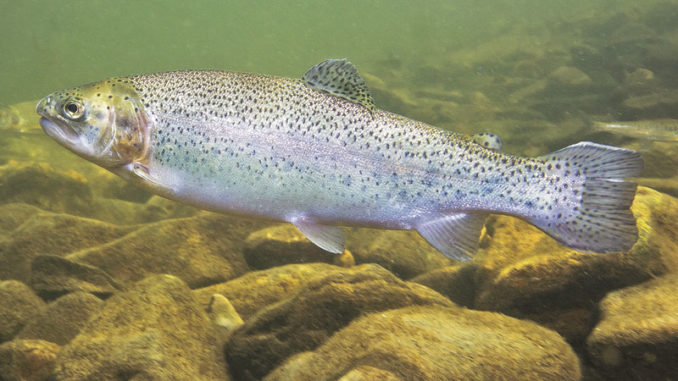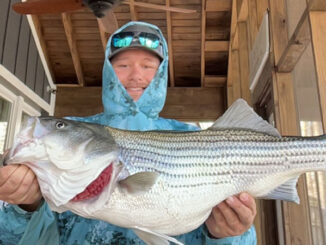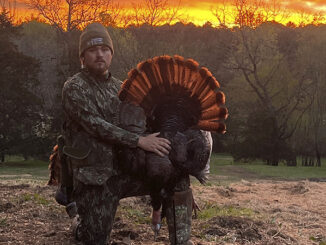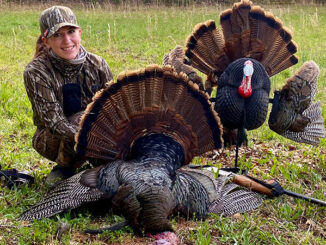
In mid-April, whirling disease was detected in four streams in South Carolina. These streams were located in Pickens and Greenville counties. The disease first occurred in the United States in 1958 and has spread throughout the country since. Fortunately, the disease has not been detected at the Walhalla State Fish Hatchery,
This problem was first detected in NC on July 27, 2015, on the Watauga River. At the time, officials were gravely concerned for the long-range effects of the disease. They feared the rainbow and brook trout populations could be seriously affected.
Whirling disease is caused by a parasite and affects all trout species and salmon. The rainbow trout and brook trout species are the most susceptible. This disease is spread by a microscopic parasite called Myxobolus cerebralis that can be transferred from one stream to another by several means.
Although affected fish cannot be treated for the disease, the widespread effect of the disease has been less severe than first expected. Some of the western states had dramatic losses in the early days after the detections of the disease. But recovery was positive.
The effects of whirling disease are exhibited by young trout (young trout are the most susceptible) by abnormal whirling or tail-chasing. It is a disease that affects nerves and cartilage. Other symptoms such as black tails and deformities to the head or body are also possible.
Trout fishermen are advised to take appropriate steps to avoid transferring the disease from one stream to another by following these tips:
Properly clean and dry equipment prior to fishing a different stream.
Do not move fish or any other aquatic life from one stream to another.
Be sure to properly dispose of fish parts after cleaning by placing in garbage, burying or burning completely.
One Stop Information Source
On a more positive note, as fly fishermen, we need to be good researchers of the best techniques, flies, equipment, destinations, etc. If you need maps, hatch charts, entomology tips, guide service or trout stocking schedules, there is a one-stop website that offers a lot to us. It is https://www.flyfishingnc.com. It contains a wealth of information and even provides GPS coordinates for North Carolina streams.
This is an excellent resource for the beginning fly-tier, including photos of various patterns that provide a great visual model for reference. Check it out and be amazed at the good information available.
Still Water Trout
Last month, as I was on a turkey hunt on a relatively new WMA in upstate SC, I ran into a man who told me that the lake on the property had been stocked with trout. It has become one of my favorite spots for bass and bream fly rod fishing from my kayak.
I was a little distrusting of the information, but a few days later, I took my kayak over and caught a few brown trout and a couple of crappies. One of the crappies was a slab. Both were full of roe and were hanging out in the treetops.
This was news to me. I didn’t know that the pond held brown trout or crappies. This news expanded my choice of species, but require different techniques from the bream and bass which hold close to structure near the bank in the summer and fall victim to popping bugs. The trout respond to streamers and tend to hold in the deeper water, probably due to the preference for colder water.
Tips for Windy Days on the Water
Once when fishing on the Madison River, near Ennis, Montana, it was a windy day and as I made a back-cast to relocate my fly, a gust of wind redirected the fly and it was firmly embedded in my lip. Not wanting to waste a day on the water, I clipped the tippet and continued to fish with the fly in my lip.
When I got back to the car, my friend cut me a strip of heavy tippet and I looped it under the bend of the hook. I held the eye of the hook down against the skin and gave the tippet a quick jerk. Problem solved.
The moral of that story is to always were eye protection when fly fishing, especially on a windy day.




Be the first to comment